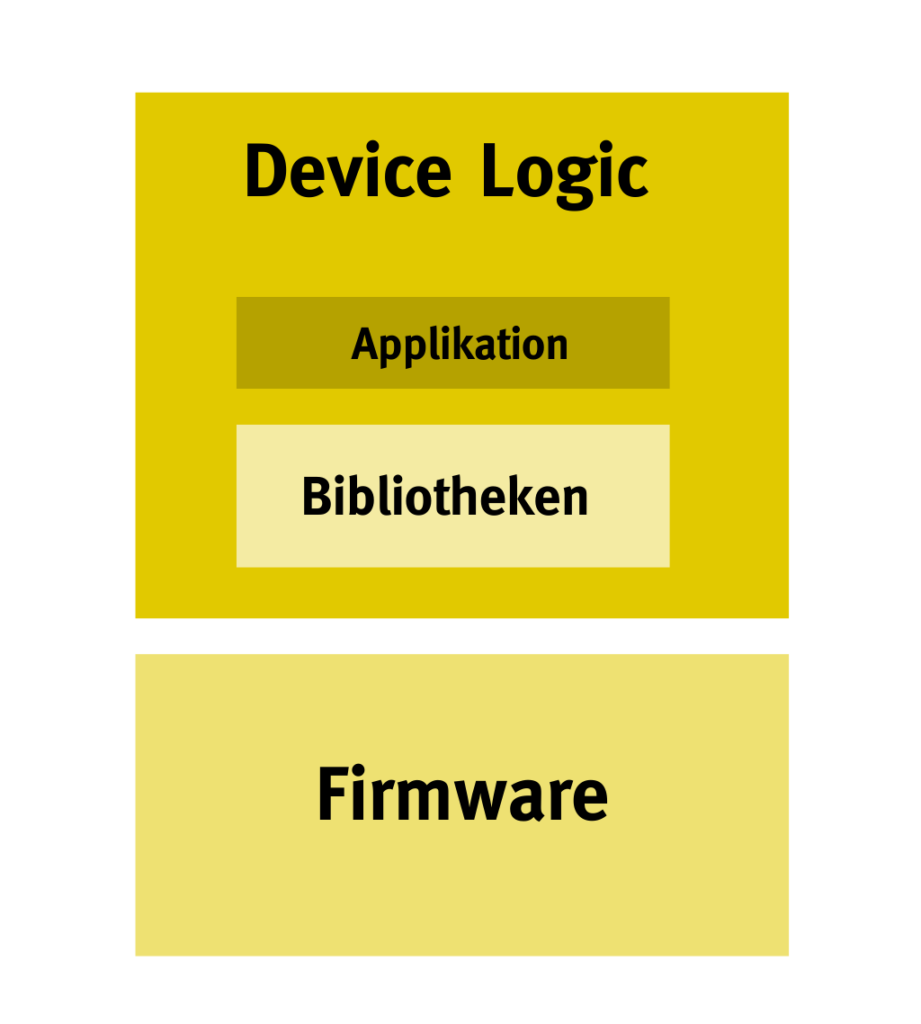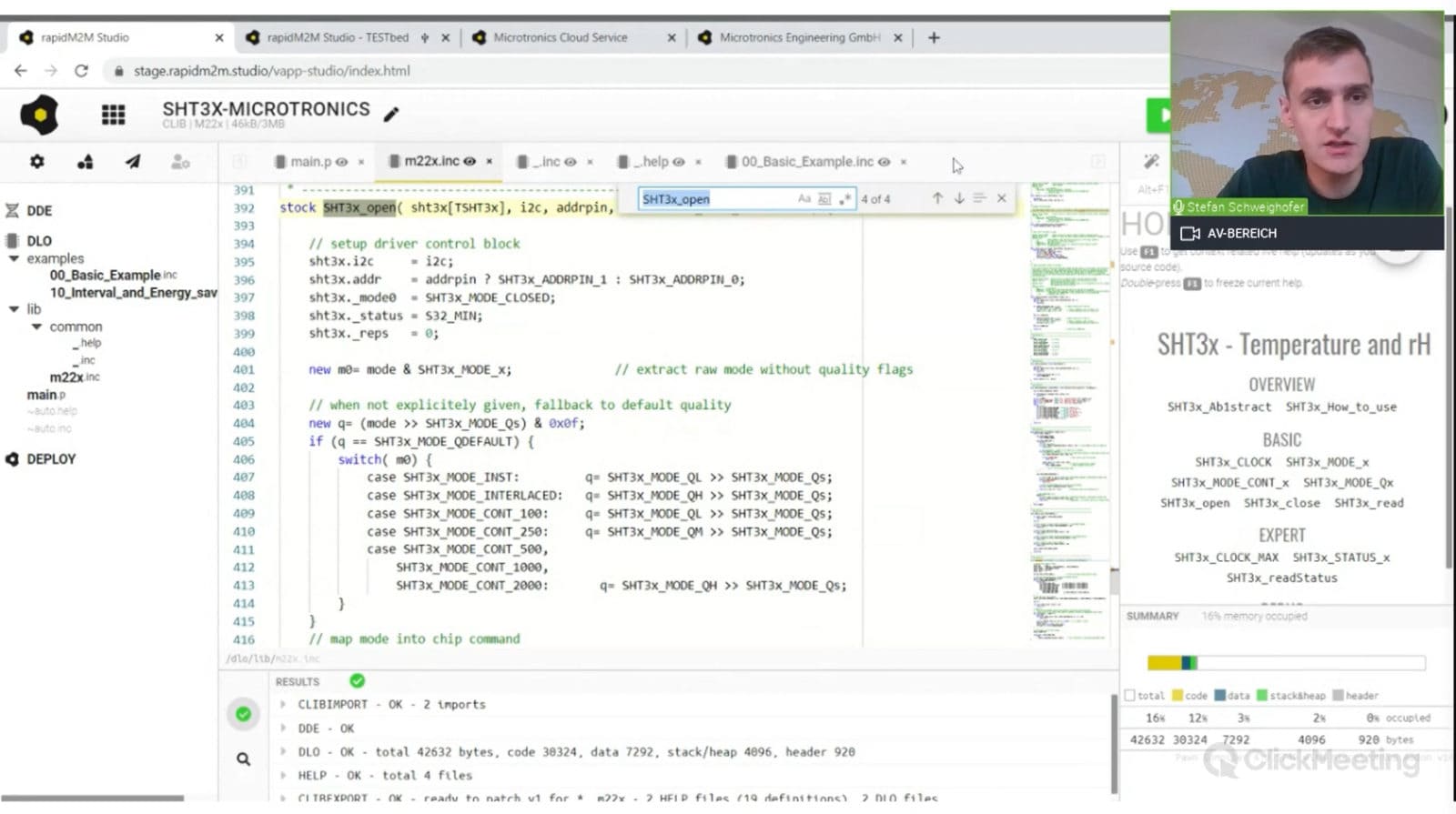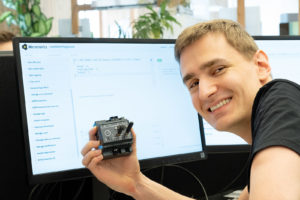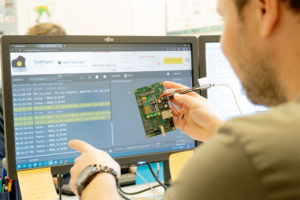Every device equipped with rapidM2M technology includes the software components firmware and device logic (DLO).
The firmware is developed by Microtronics and is the foundation for the operation of the Device Logic. It is also referred to as the rapidM2M operating system.
The device logic is developed in the studio as part of an IoT app and contains the application logic in the device. A number of libraries are available for easy programming of the application.

What does the firmware do?
Or to put it another way, “What doesn’t the application have to worry about?”
- Historical data storage
The data is time-stamped and stored in non-volatile memory. Regardless of whether or not there is a connection to the server at the time of saving, the data remains saved. - Device Log
In addition to the application data from the device logic, additional information is stored that is not directly related to the application. This data can provide important information in the case of service and support. For a mobile phone uplink, for example, the network information is fundamental: with which provider has the device registered, how good is the reception quality, etc.? - Uplink
Whether 2G/3G/4G, WiFi or Ethernet uplink – the firmware takes care of the communication link.
- Efficient and secure data synchronisation
The historical data and configurations are compressed to generate as little data volume as possible. Transmission takes place via an encrypted and authenticated communication channel to ensure the highest level of security. - OTA Update von Firmware und Gerätelogik
Both the firmware and the applicative device logic can be updated over-the-air (OTA).
What are the advantages of this approach?
- Clean separation of responsibilities – “divide and rule”
The developer of the device logic only has to deal with the application itself. All necessary functions for the operation of the device logic are provided by the firmware. - Few different firmware, many applications
The firmware is maintained and further developed by Microtronics. Extensions and bug fixes from many different applications flow into a common basis. This ensures a stable technological foundation. - Abstraction of the underlying hardware
On the basis of available libraries in the Studio, it is possible to make application development largely independent of the underlying hardware. For example, it is easy to switch from an M220 module to an M230 module when higher performance or more memory is needed; - Security
The binary code of the device logic is interpreted by the firmware. Direct memory access from the device logic to the firmware is not possible. - Availability
Fatal errors in the device logic (e.g. endless loop) are detected by the firmware. In the event of an error (repeated occurrence within a short period of time), the device logic is terminated and the unit switches to an internal recovery mode. This ensures that an OTA update of the Device Logic is possible at any time. - Deployment and OTA update
If a change is made in the application, only the device logic in the unit must be updated. This makes the update process faster and reduces energy and data consumption. Deployment is done via IoT Apps using the integrated development environment Studio.
Outlook
Microtronics pursues the clear goal of making the programming of an IoT application as simple as possible for interested parties with rapidM2M Studio. The reusability of proven implementations (best practices) in device logic should be further promoted. For this purpose, the libraries and sample codes are constantly being expanded.



